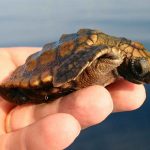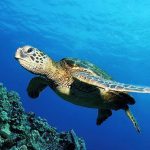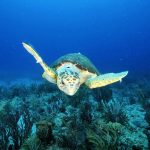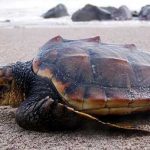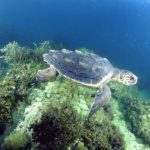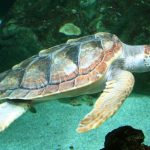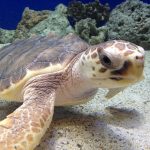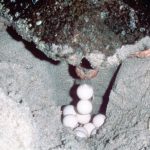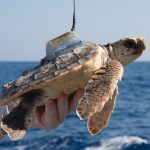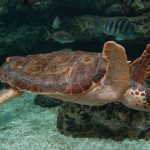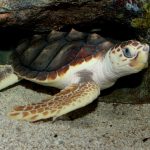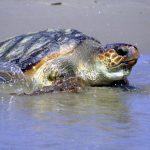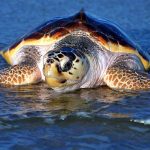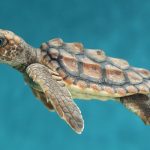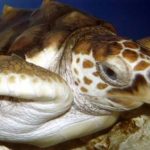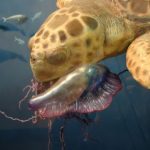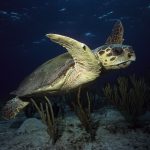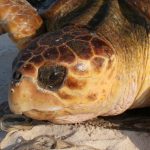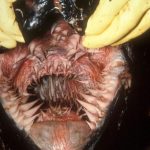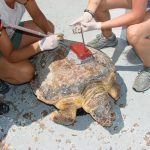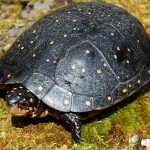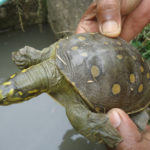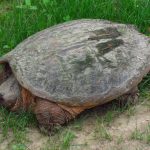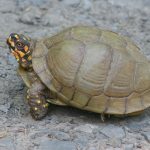| Other Names |
Loggerhead Sea Turtle, Loggerhead |
| Size |
Around 90 cm; largest recorded specimen is 280 cm |
| Weight |
Around 135 kg; largest specimens weigh more than 450 kg |
| Color |
Yellow to brown skin color with reddish-brown shell |
| Distribution |
Southeastern coast of North America, the Gulf of Mexico, Canada, Brazil, Cape Verde Islands, Arabian Peninsula, Arabian Sea, coastlines of Africa, Western Australia, Baja California Peninsula, East China Sea, Mediterranean Sea, Alboran Sea, Adriatic Sea, Eastern Australia, Japan |
| Habitat |
Open ocean, shallow coastal waters |
| Diet |
Gastropods, bivalves, decapods, sponges, corals, polychaete worms, sea anemones, sea pens, cephalopods, brachiopods, isopods, barnacles, insects, bryozoans, sea urchins, sea cucumbers, starfish, sand dollars, fish (eggs, juveniles, and adults), hatchling turtles (including its own species), algae, vascular plants |
| Hibernation Fact |
Hibernates to some extent |
| Predators |
Eggs and hatchlings fall prey to crabs, snakes, gulls, opossums, corvids, bears, rats, mustelids, skunks, canids, armadillos, procyonids, cats, pigs, toads, lizards, seabirds, parrotfish, moray eels; adults are preyed upon by large sharks, seals, killer whales |
| Breeding Season |
End of March to early June in Northern Hemisphere |
| Mode of Reproduction |
Oviparous (egg laying) |
| Clutch Size |
Around 112.4 eggs |
| Incubation Period |
53 to 68 days |
| Reproductive Age |
17 to 33 years of age |
| Average Lifespan |
47 to 67 years |
| IUCN Conservation Status |
Vulnerable |


